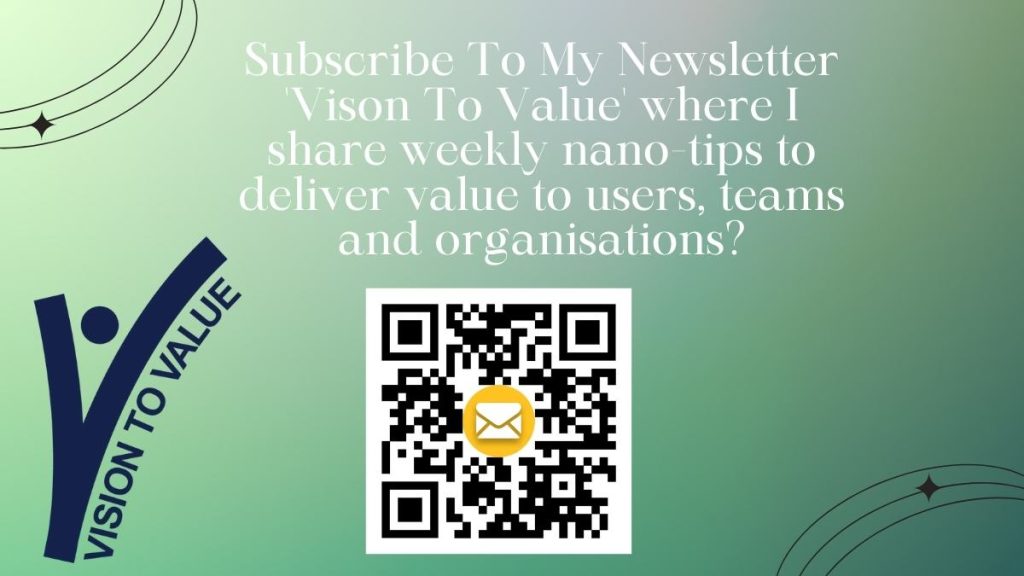Welcome, dear reader, to the wacky world of “Active Listening,” a skill so underappreciated it’s practically a ninja in the communication arts!

What Is Active Listening
Active listening is a communication technique that involves fully concentrating, understanding, responding, and then remembering what is being said. It goes beyond just hearing the words spoken; it’s about engaging with and processing the content of the message.
Why It Is Important In Product Development
Active listening is a skill that enhances professional relationships by fostering deeper understanding, reducing conflicts, and improving overall communication. It’s especially valuable in complex conversations, which are plenty in product development.
Active listening is particularly crucial for product people i.e. leaders, managers or owners due to several reasons that directly impact their effectiveness in guiding product development.
- Understanding Customer Needs: Product people must deeply understand the needs, pain points, and desires of their target users or customers. Active listening helps them to gather accurate and nuanced insights from customer feedback, market research, and user testing. This understanding is vital for creating products that genuinely solve users’ problems and meet their expectations.
- Effective Team Communication: Product people act as a bridge between various stakeholders, including team members, marketing, sales, and executives. Active listening ensures that they fully understand the perspectives and concerns of each group, facilitating better coordination and decision-making. It also helps in negotiating and resolving conflicts, as they can empathetically understand different viewpoints.
- Informed Decision Making: Product development often involves making tough choices under uncertainty. By actively listening to data analysis, market trends, feedback from the team, and user input, product managers can make more informed decisions that align with both the users’ needs and the business goals.
- Continuous Improvement and Innovation: Active listening keeps the product people open to new ideas and perspectives, which is crucial for innovation. By being receptive to feedback and suggestions, they can continually improve the product and adapt to changing market conditions.
- Building Strong Relationships: Trust and psychological safety is essential for product people, both with their team and stakeholders. Active listening shows respect and appreciation for others’ ideas and contributions, fostering a collaborative and positive work environment.

Essential Elements Of Active Listening
Focus on the Speaker: The Art of Not-Zoning Out: First things first, when someone is talking, it’s polite (and useful) to listen. Shocking, I know! This doesn’t mean preparing your grocery list in your head while nodding like a bobblehead. It means genuinely tuning in. Think of it as watching your favourite show – you wouldn’t want to miss the plot twist because you were busy counting the number of ceiling tiles, right?
A few ways we can improve this focus is by
- Minimising Distractions such as phones, slack, chats, etc.
- Eye Contact and Body Language
- Note-taking can help your mind focused
Open-Ended Powerful Questions: Unleashing the Power of ‘Why’ and ‘How’
This is where you channel your inner curious child. Remember when you asked a million questions and drove everyone nuts? Channel that energy! Open-ended Powerful questions are your secret weapon to keep the conversation flowing and show that you’re not just hearing, but listening. “Why it is important to you?” or “How do you currently meet this problem?” can open doors to Narnia-like conversations.
No Judgement: Keeping Your Inner Judge Judy in Check
Remember, when someone is sharing, it’s not an episode of a courtroom drama. Keep your judgements locked away. This isn’t the time to mentally criticize their choices or wonder why they thought neon green was their colour. It’s about them, not your opinions on their life choices.
Pre-judgment in active listening is like having a quirky, opinionated parrot in your brain, squawking its own commentary over the speaker’s words. It’s like trying to tune into a radio station while your inner DJ insists on playing remixes of past experiences and biases.
Rephrase & Summarise
Paraphrasing and summarizing what was said is like giving a gift back to the speaker. It shows you really got it. Combine this with “I see”s, and the thoughtful “Hmm”s. It’s like being in a tennis match, but instead of balls, you’re lobbing back acknowledgements.
Listen to Understand, Not Just to Respond
Lastly, Here’s the golden rule: Listen with the intent to understand, not just to reply. It’s not a race to see who can speak first. Imagine their words are puzzle pieces; you’re trying to see the picture they’re painting, not just waiting for your turn to throw your own pieces into the mix.

Wrapping It Up
So, dear product leaders, owners or managers, as you navigate the intricate tapestry of product development, let active listening be your guiding star. Remember, the most groundbreaking products and harmonious teams are often the offspring of a truly great listener’s empathy and insight. Here’s to listening, understanding, and creating – may your conversations lead to innovations that echo in the corridors of success. 🎧💡🚀


